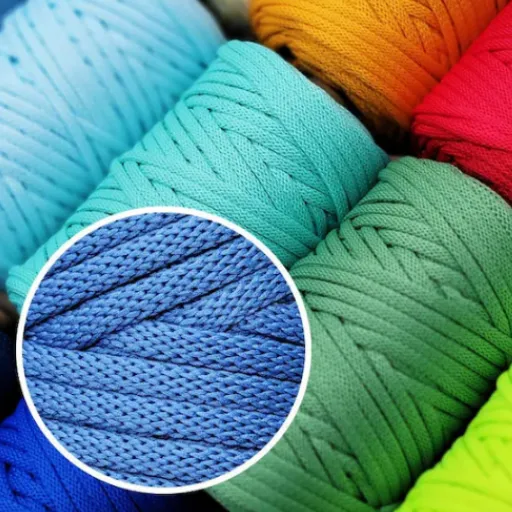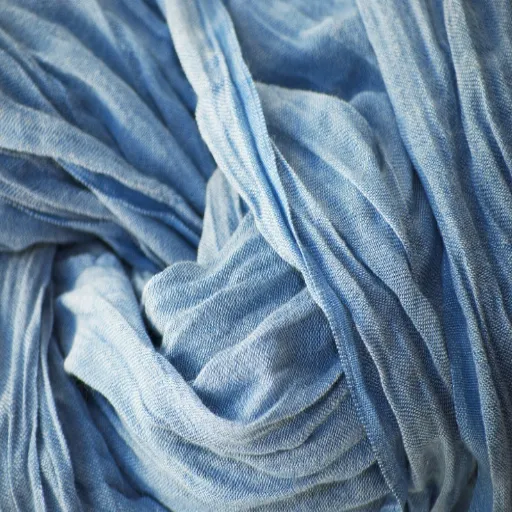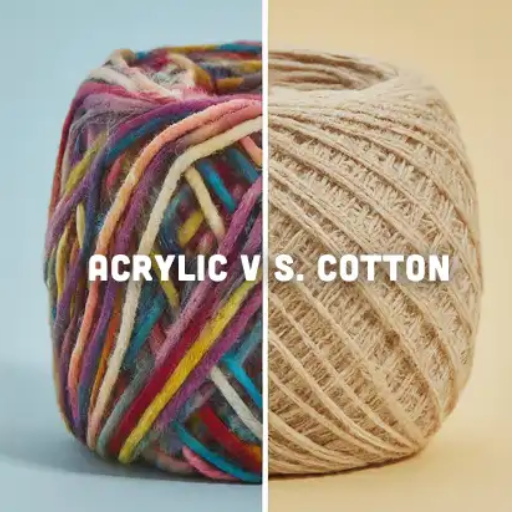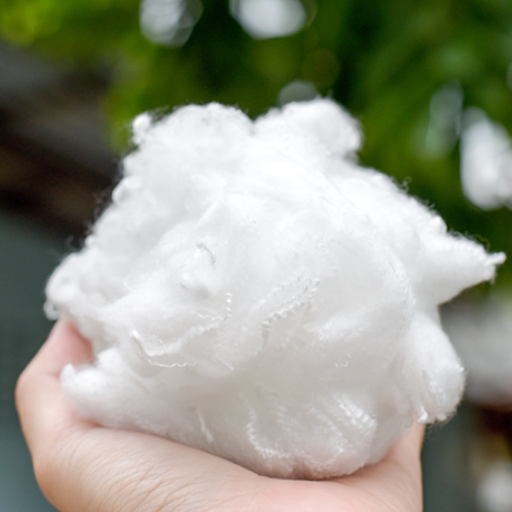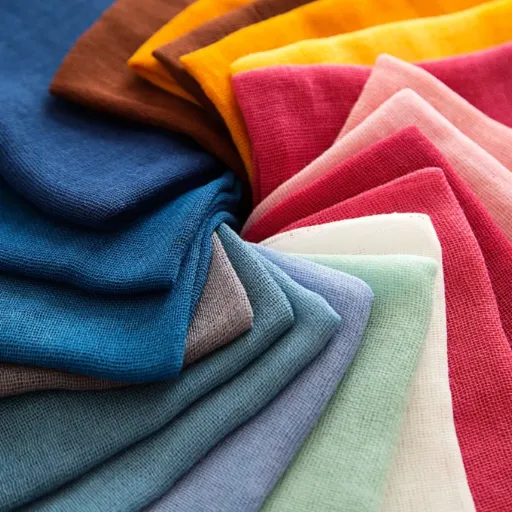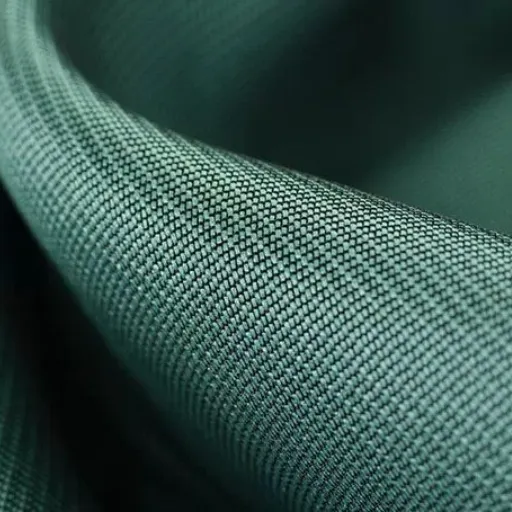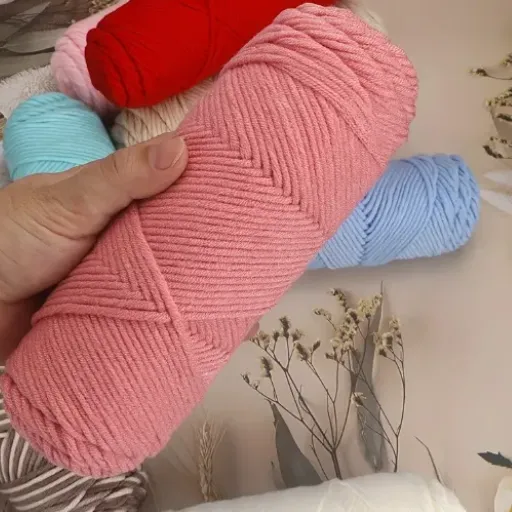In the quest to find the ideal fabric, polyester and cotton usually come to mind as the most durable fabric choices. The good news is that these two fabrics, which are very similar in terms of features and uses, can actually be blended. The new fabric called poly-cotton is a blend of two fibers that combines the best of both worlds. It offers not only the strength but also the comfort and the ability to use in a wide variety of applications. So whether you are looking for clothes or something for your bed or upholstery, knowing the differences among polyester, cotton, and their blend will be of great help in making your selection. This guide will discuss the key properties of each fabric, their advantages and disadvantages, and the reasons for the poly-cotton blend being a hit among customers. Get ready to find out what makes this mixture so powerful and which alternative fits you best.
What is Cotton Fabric?
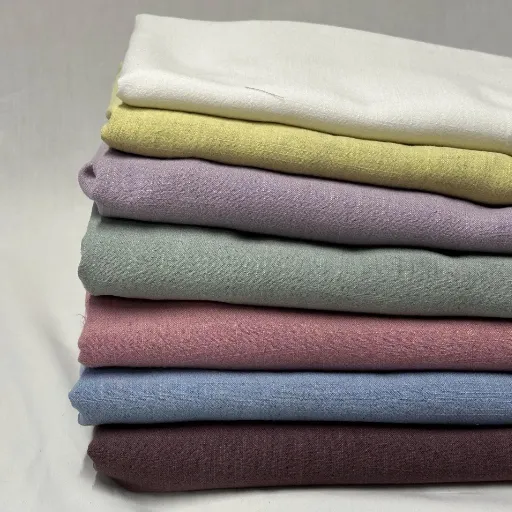
Definition and Characteristics
Cotton fabric is a natural textile sourced from the cotton plant’s fibers. It is one of the most common fabrics in the world, and its softness, breathability, and versatility make it a sought-after material. Cotton goes through the process of spinning to become a yarn and is then woven or knitted to produce different kinds of fabrics that are suitable for garments, bedding materials, and upholstery.
Cotton’s main property is its capability of being a very good moisture absorber, which makes it comfortable to wear and also suitable for use in hot countries. Its fibers are natural and they allow for the ventilation of air, which is the cooling effect that is associated with cotton and that no artificial fabric can imitate. Furthermore, cotton is hypoallergenic and kind to the skin so it is often the first choice of people with certain skin conditions or allergies.
On the other hand, cotton has limitations besides its excellent qualities. It can easily crease, shrink and it will also lose its strength faster if it is not properly cared for. Yet, the disadvantages of cotton have led to the invention of blends such as poly-cotton, which fuses cotton’s natural properties with the durability and strength of synthetic fibers. This mixture deals with the drawbacks of cotton while keeping a large part of its comfort and ventilation.
Breathability and Comfort
The fantastic breathability and comfort that are the main features of cotton are the very reasons it is one of the most favored natural fibers for clothing and textiles. The air circulation in the structure of cotton is excellent; thus, the body can cool down during the hot season. Besides, cotton absorbs a lot of moisture to the extent that it does not leave the skin wet; hence the person feels dry and comfortable even when engaged in highly demanding physical activity.
Then, poly-cotton blends carry this comfort still addressing some of the drawbacks of cotton. These blends offer cotton’s breathability and softness to a large extent, but at the same time, they add durability and resilience that come from the synthetic fibers being blended. Thus, the poly-cotton garments have more resistance to wrinkling, shrinking, and wearing, and yet they still retain the quality of being light and airy which is the characteristic of pure cotton. They are comfortable and performing fabrics at the same time, and thus they are presented to the users who want low maintenance yet comfortable clothing options.
If one emphasizes breathability and comfort, then pure cotton is still a great choice because it is naturally ventilated and has non-irritating properties. On the other hand, for wide-ranging and lasting use, poly-cotton blends are a good option without too much giving up on comfort. The choice of the best fabric eventually comes down to one’s needs and preferences, whether for daily or special activities.
Eco-Friendliness of Cotton
Cotton is often regarded as an eco-friendly material due to its natural origins and biodegradability. Being a plant-based fiber, it breaks down more easily compared to synthetic fabrics, reducing its long-term impact on landfills. Additionally, organically grown cotton eliminates the use of harmful chemicals like pesticides and synthetic fertilizers, making it a more sustainable option for the environment and consumers alike.
However, the cultivation of conventional cotton has significant environmental drawbacks. It is a water-intensive crop, requiring vast amounts of water for irrigation, which can strain local water resources, particularly in arid regions. Furthermore, the widespread use of pesticides and insecticides in traditional cotton farming contributes to soil degradation, water contamination, and harm to surrounding ecosystems.
Efforts to make cotton production more sustainable include promoting organic cotton farming and adopting water-efficient irrigation techniques. These practices aim to reduce the ecological footprint of cotton, enhancing its reputation as an environmentally friendly choice. Consumers who prioritize eco-friendliness should consider products made from organic or recycled cotton, as these options support more responsible production methods.
What is Polyester Fabric?
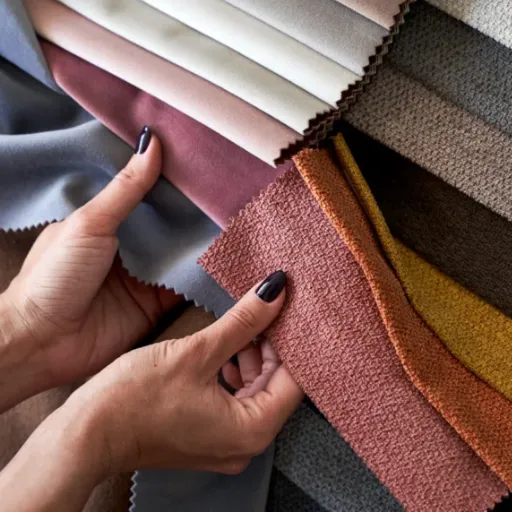
Definition and Characteristics
Polyester fabric is a man-made, synthetic material that comes from the petroleum-based fibers, mainly the polyester (PET). The process of its manufacture is chemical reaction called polymerization where through the combining of alcohol and acids, strong and tough fibers are created. The final product is a fabric that is very light in weight, impervious to wrinkles, and very adaptable in its various uses.
Durability is the foremost feature of polyester fabric. It can toll the rigors of usage and thus forms a perfect option for clothing and other products that demand performance for a long time. Besides, the low moisture absorption of polyester makes it dry fast and also stain resistant. Moreover, the fabric’s stretchiness helps it remain in its original form even after several washings and wearings, thus being a convenient choice for commonplace items.
Cost and production are the main advantages of polyester, and they are also the reasons for the material being very common in many industries. The fabric’s qualities of being adaptable and readily available make it possible to use in garments, domestic and industrial applications. Although polyester is less breathable than some natural fibers such as cotton, it is still widely used in textiles for its comfort and; thus, it is often mixed with other fabrics. This way both synthetic and natural fiber properties are provided to the consumer.
Durability and Maintenance
Polyester is known for its durability and has been widely used in different applications. Its synthetic fibers are strong and will not deform with time. In addition, polyester is less prone to getting worn out in the washing machine or by the use of rotary driers; thus, it has become a very suitable material indeed for everyday wear.
The upkeep of polyester is generally simpler than that of most natural fabrics. Besides drying quickly because of its moisture-wicking ability, it is usually machine washable and seldom needs ironing since it does not wrinkle easily. However, one should note that high heat may cause damage to polyester—the recommendation is to wash it in warm or cold water and keep it away from high temperatures by, for instance, not using steam or heat when ironing and setting the dryer on air or low heat.
To ensure the longest life possible for polyester fabrics, it is essential to adhere strictly to the care instructions given by the manufacturer, as they may vary depending on the blend. Simple practices like washing with similar colors and using milder detergents go a long way in maintaining the fabric’s appearance. All these attributes make polyester a perfect selection for those who want a fabric that is durable and easy to look after.
Moisture-Wicking Properties
Polyester is celebrated for its superior ability to wick moisture away from the skin, thus becoming the most preferred fabric for sports and fitness clothing. The sweat is drawn away from the body to the surface of the material, where it is quickly evaporated, thanks to the fabric being specially designed for such. This will keep an active person cool, dry, and comfortable during heavy physical activities—even if the weather is humid.
The secret of polyester’s moisture-wicking property is in the synthetic fibers that don’t soak up water like natural fibers such as cotton. This guarantees that sweat is transported away very effectively and that it will not be held up in the fabric. Moreover, the majority of polyester fabrics come with special finishes or coatings that increase their moisture management capabilities, thus elevating the fabric’s performance in sports or other outdoor activities.
Moisture-wicking properties, among other things, can turn polyester fabric into a practical choice for everyday use in hot climates or for apparel that is likely to be exposed to sweat. The fabric’s drying-out capacity not only keeps the wearer comfortable but also prevents the growth of bacteria responsible for odor, thus making it an excellent choice for different uses and a reliable and versatile fabric.
Comparison: Polyester vs Cotton

Breathability and Moisture Management
Cotton is usually considered the best fabric for light and breathable wear when the discussion is about breathability. The natural qualities of cotton fibers allow the air to come and go which eventually makes the person wearing it cooler, thus the fabric is especially beneficial for hot and humid areas. One study says that cotton can hold up to 27 times its weight of moisture, thus quite effectively draining the moisture from the skin and the skin then further makes it evaporate naturally. On the downside, the high absorbency of cotton can also keep it wet for long periods, which might cause the user some discomfort during long pursuits.
Polyester, in contrast, is made to manage moisture, hence providing better performance. The water does not penetrate the polyester fibers like in the case of cotton, but melts the surface instead and hence it has the capacity to dry almost instantly. The modern moisture-management polyester fabric is capable of drying in a matter of minutes and is able to withstand even the toughest situations such as high physical activities or extreme weather.
To sum up, cotton gives good enough breathability for moderate or light use meanwhile polyester has the moisture-wicking capacity alongside the faster drying time making it suitable for high-performance situations. The choice between the two depends mostly on the activity, the weather, and personal taste.
Durability and Care Requirements
Durability factor, in most cases, polyester is the winner over cotton. Polyester is the name of a synthetic material that is very strong and tough, hence very resistant to wearing, tearing, and stretching. It is not only used for sportswear and outdoor gear but also remains a favorite because it doesn’t change its form after being it many times. A research study mentions that polyester fibers can endure up to 40 washes at least and still keep the same performance and structure if taken good care of. Moreover, polyester is practically wrinkle-free and doesn’t shrink, thus its lifespan is lengthened even more.
In contrast, cotton is a natural fiber that is soft and pleasant to wear but at the same time, it is more vulnerable to wear and tearing. If used regularly, cotton fibers can start to degrade and the fabric can lose its shape and strength over time. One of the conclusions drawn from the report states that cotton shirts, with proper care, usually last about 30 washes before a quality decline which is hard to miss. Nonetheless, cotton garments are biodegradable so they can be considered a sustainable choice, unlike synthetic ones that cannot be recycled.
Talking about care, polyester is low maintenance, it can be washed in a washing machine and dries quickly. It is not very absorbent, and that is why it resists stains. Cotton needs more care, it has to go through gentle washing cycles and sometimes low-heat drying to avoid shrinking. Both materials have their pros and cons but the final decision is based on the possible use, whether the ease of care or environmental impact is a priority.
Cost Comparison
The cost of polyester and cotton is analyzed from different angles such as production expenses, demand in the market and quality. When we talk of synthetic fiber, then certainly polyester comes at the top of the list and is more or less half the price of cotton. To be specific, polyester fabrics cost around $5 to $10 per yard depending on the quality of the blends while cotton fabrics run from $10 to $20 per yard for standard types and as much as organic cotton high-priced types.
Another aspect of price difference is the factor of durability over time. Polyester lasts long and is invulnerable to the effects of wear and tear, hence, its lower price initially and buyers who are money-wise consider it an economical option. Cotton, though, is the softest and most breathable fabric, which is why it is always priced higher, especially the varieties that are high quality or sustainably produced. Pricing of polyester immediately cost saving is compared by buyers with the factors of comfort and eco-friendliness associated with cotton being the higher priced choice. Henceforth, the final decision is mainly depends on whether one chooses to go with the budget or the specific requirement needs.
Environmental Impact of Polyester and Cotton
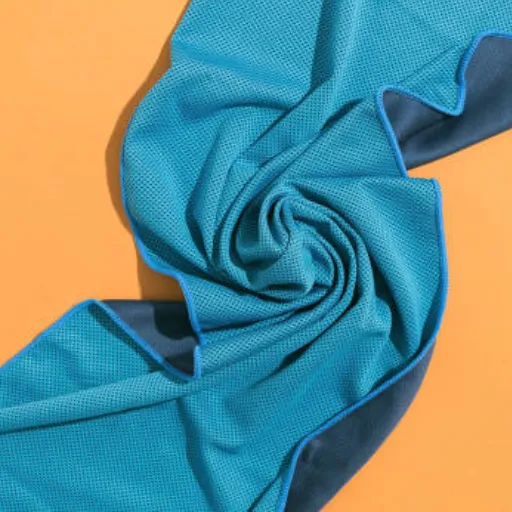
Polyester’s Environmental Concerns
Polyester has always been associated with its environmental impact, which was mainly due to its synthetic origin. The material is derived from non-renewable resources—petroleum, and the energy used for its production is quite high along with emissions of greenhouse gases coming from the process. Further, both the extraction and refinement of polyester result in gas emissions that pollute the air, while also consuming a large amount of fossil fuels thus intensifying global warming issues and such.
The other issue that has been raised concerning polyester is its contribution to microplastic pollution. The polyester clothing when washed releases fibers that are tiny and called microplastics that end up being carried by rivers and streams to the sea, where they stay for a long time. These particles are not biodegradable and thus, they will not be gone from the environment anytime soon. The presence of microplastics in water is very harmful to aquatic life as they might get larger organisms and finally even human beings through the food chain. The presence of polyester, in this case, will always create pollution problems because the very nature of this material is to have a long-lasting environmental footprint.
On top of that, polyester’s disposal at the end of its life cycle creates trouble. Polyester is not biodegradable like natural fibers (e.g., cotton), thus finding its way into landfills; whereas natural fibers decompose and vanish. Although it is possible to recycle polyester it is only a small percentage that is done since the process is very expensive and the quality drops. Moreover, the whole thing is made even worse by the logistics of collecting post-consumer polyester products—without more sustainable alternatives or recycling innovations, the environmental toll of polyester will continually be a great concern.
Cotton’s Sustainability Challenges
Cotton, though often regarded as a natural and sustainable fiber, does not that much to the environmentalists throughout its lifecycle. The water issue is one of the factors mainly responsible for the bad image of cotton in the water-consuming required for the cultivation of the cotton plant. The growing of the cotton plant restricts the availability of the local water resources to the point of contributing to water scarcity, especially in regions with very little rainfall, where large amounts of water have to be supplied through irrigation. At the same time, soil degradation is the worst-case scenario when it comes to growing cotton, for, the more intensive farming practices are, the less fertile the soil becomes over time.
Another major issue is the extensive use of pesticides and fertilizers in conventional cotton farming. These chemicals not only harm local ecosystems but also pose risks to human health for those working on or living near cotton farms. While organic cotton offers a more eco-friendly alternative by eliminating synthetic chemicals, it remains a small fraction of global production, largely due to higher costs and lower yields.
The road to cotton’s sustainability challenges may be paved with a change of practice, whereby water efficiency will be improved, crop rotation will be implemented, and organic farming techniques will be adopted. Moreover, supporting farmers with initiatives and investing in the technological innovations that are sustainable are some of the ways cotton’s environmental impact can be lessened. If the changes are given priority, the global fashion and textile industry is likely to be very close to a sustainable future.
Options for Organic Cotton and Recycled Polyester
Organic cotton and recycled polyester are two of the most sustainable and eco-friendly materials that all together can change and cut down the environmental footprint enormously of the fashion and textile industry. Organic cotton is a kind of cotton that is cultivated without the use of chemicals and synthetic fertilizers only, thus contributing to the soil health and the diversity of living organisms. Besides, it is less water-consuming than conventional cotton, which makes it a good choice for the environment. When organic cotton is taken as the priority, the industries are not only contributing to better environmental practices but also supporting the farming community.
Recycled polyester is a different case; it is made by plastic waste, an example is the used water bottles. The whole process that goes on here is reducing the demand for virgin polyester, which comes from the non-renewable fossil fuels part of the earth. The recycled polyester, however, not only lowers the carbon emissions but also stops the plastic waste from going into landfills and oceans thus mitigating pollution. The durability and versatility characteristics of this material make it the right option for different types of textile and fashion products.
These two together, organic cotton and recycled polyester, present a very convincing and attractive solution to one of the major problems which is sustainability in the fashion sector among others. The introduction of these materials will provide a chance to get the right mix among functionality, price and eco-friendliness. By absorbing such sustainable options the companies will not only be able to reduce the resource-intensive conventional textiles that they depend on but also help in making the consumers more responsible through their choices.
Choosing the Right Fabric: Cotton vs Polyester
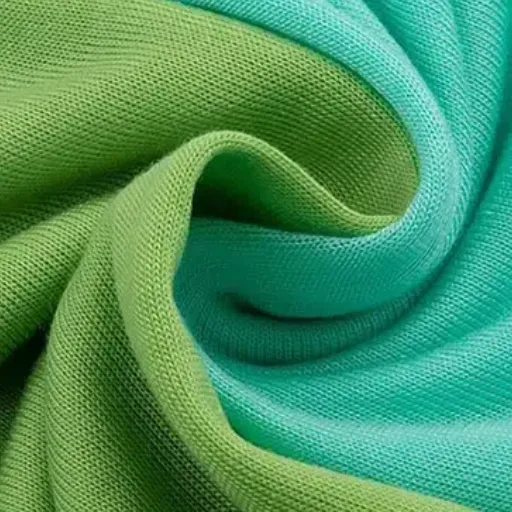
Suitability for Clothing
The comparison of cotton and polyester regarding clothing can only be made after considering their different features and how they match with the garment’s purpose. Cotton is a natural fiber that is very popular due to its breathability, softness, and moisture absorption. Because of these qualities, cotton is highly recommended for casual wear, summer clothes, and all articles where skin comfort is the main concern. Moreover, cotton is hypoallergenic so it can be used by people with sensitive skin.
Polyester, however, is a synthetic fiber that is highly valued for its strength, resistance to wrinkling, and ability to wick away moisture. This makes it perfect for sportswear, outdoor clothing, or even garments that need to last long and be easy to care for. Polyester happens to dry quickly which is why it is the preferred fabric for athletic or performance use. Nevertheless, it may not be as comfortable in hot weather because it has a lower breathability index compared to cotton.
In the end, the choice between cotton and polyester would be determined by the actual requirements of the clothing. For day-to-day comfort along with eco-friendly consumers who prefer natural fibers, cotton is the material of choice. On the other hand, polyester is the one that brings functionality and practicality in the case of high-tech or performance-related garments. By and large, one can arrive at a good decision between the two raw materials through the consideration of these pronounced differences in relation to their application.
Home Textiles and Fabrics
Home textiles and fabrics are fundamental to the creation of comfortable, functional, and attractive living spaces. They contain a variety of items such as bed linens, curtains, sofas, and towels. Different homes have different fabrics that users choose according to the durability of the fabric, how easy it is to maintain, its texture and the style of the house decorated with the fabric.
Home textiles made from natural fabrics like cotton and linen are very popular as they are quite breathable and soft. The materials are very good for sensitive skin and their highly absorbent properties make them perfect not only for bedsheets but also for towels. However, these fabrics might need constant care and they can be prone to getting wrinkled, which may not be very convenient for all homeowners.
Polyester and microfiber are two mainstay synthetic fabrics that have gained popularity among fabric lovers due to their long-lasting qualities, stain resistance, and low price. These materials have become the first choice for curtains and upholstery in high-end places because they are practical, and their cleaning and maintenance are not burdensome. In the end, the choice of the right fabric always depends on how personal needs and preferences are weighed against the functional requirements of each home textile.
Blended Fabrics: The Best of Both Worlds
Blended fabrics, as the name implies, are a mix of two or more fibers. They are strong enough to be used in different applications and markets. Their main aim is to swap the strengths of each fiber and at the same time to reduce their individual weaknesses. For example, a combination of natural fibers like cotton or wool with synthetic ones like polyester or spandex can create a fabric that is more durable, stretchy, and easy to care for.
These fabrics are constantly praised for their flexibility and utility. Blended fibers usually have the very qualities that people like in natural ones-softness, breathability etc, but at the same time they possess the very properties that are in demand in synthetic ones-resilience, and resistance to wrinkling and fading. This makes them just right for such diverse purposes as everyday clothing, sportswear, and home textiles like curtains and upholstery. Also, these fabrics are in general less expensive than the pure natural or synthetic alternatives, thus providing a good-quality option that is affordable too.
Blended fabrics are, moreover, eco-friendly and have such environmental benefits, as they seldom draw so much water and power during production compared to natural fibers solely. Additionally, the enrichment of their longevity means a possible reduction in waste after a period of time. Blended fabrics are the very epitome of combining the best attributes of different fibers, presenting a practical and well-rounded solution for the entire spectrum of textile needs.
Frequently Asked Questions (FAQs)
Q: What is a polyester cotton blend?
A: A polyester cotton blend is the blend of two natural fibers, cotton and polyester. The blend is strong and durable, and it has the property of being less soiled and easy to iron, thus making it a good choice for everyday t-shirts and home decorations.
Q: How does the durability of polyester cotton compare to pure polyester?
A: The durability of polyester cotton blends is generally higher than that of pure polyester. Polyester is a synthetic fabric that is known for its strength; however, the addition of cotton fibers makes the blend softer and more breathable, hence comfortable to wear.
Q: What are the benefits of using cotton-polyester in clothing?
A: Cotton-polyester fabrics offer a unique combination of qualities like the softness and breathability of cotton, the durability and wrinkle-resistance of polyester. Therefore, they are perfectly suitable for those that need both comfort and longevity, such as cotton clothes and bed sheets.
Q: Does polyester cotton fabric shrink when washed?
A: Polyester cotton blends are less likely to shrink than pure cotton fabrics. Though cotton tends to shrink, polyester does not, thus allowing the dimensions after washing to be more stable.
Q: How does the breathability of cotton in a polyester blend affect comfort?
A: The comfort provided by the breathability of cotton in a polyester blend is fantastic as it permits air circulation, which keeps you cool and comfortable, especially when it is hot. This property makes it a favorite fabric for clothing and home textiles to be lightweight.
Q: Are there any drawbacks to using polyester cotton blends?
A: Polyester cotton blends can fall short in the natural feel area of 100% cotton despite their many advantages. Furthermore, polyester fabric could lead to heat sensitivity, thus precautions should be observed while ironing or washing.
Q: How can I determine the percentage of polyester in a cotton-polyester blend?
A: The care label of the fabric typically has the percentage of polyester in a cotton-polyester blend printed on it. This will show the blend ratios, hence the understanding of the fabric’s characteristics and performance.
Q: Is sustainable cotton used in polyester cotton blends?
A: Some cotton manufacturers are certified and focus on eco-friendly practices when producing cotton and polyester. Sustainable cotton is thus sometimes used in polyester cotton blends. Always check product labels for information on sustainability.
Q: How do I choose between cotton or polyester for my needs?
A: Keep in mind the specific properties you need when choosing between cotton or polyester. In case you give priority to breathability and softness, then cotton might be your best option. However, if you want a fabric with good resistance to wear and tear and to wrinkling, then a polyester-cotton blend would be the perfect choice.
Reference Sources
-
A Guide to Polyester, Cotton, and Blended Fabrics – An overview of common polyester-cotton blends, their properties, and uses in clothing.
-
Microbial Odor Profile of Polyester and Cotton Clothes – A study comparing odor retention in synthetic and natural textiles, including polyester and cotton.
-
What is PolyCotton Fabric: Properties, Advantages, & More – A detailed explanation of polycotton fabric, its durability, and its advantages over pure cotton.
-
Choosing the Right Fabric: 100% Cotton vs. Poly Cotton – A comparison of the characteristics of 100% cotton and polycotton fabrics.
-
POD Fabrics Guide: Cotton-Polyester Blend or 100% Cotton? – A guide discussing the benefits of cotton-polyester blends versus pure cotton for various applications.









